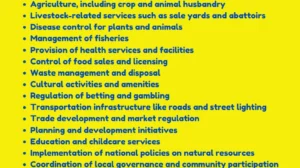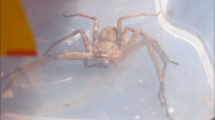How many animals are in the world?

This is a fascinating question that has intrigued many people for centuries.
The answer, however, is not so simple.
There are different ways to define what an animal is, and different methods to estimate how many species and individuals exist on our planet.
In this article, we will try to explore some of these aspects and provide some possible answers based on the latest scientific research.
How many animals are there in the world in 2022?
One way to approach this question is to look at how many animal species have been described and named by scientists.
According to the International Union for Conservation of Nature (IUCN), there are currently 2.16 million living animal species that have been formally recognized.
Around 1.05 million of them are insects, over 85,000 are molluscs, and around 65,000 are vertebrates.
However, this number is likely to be a gross underestimate of the actual diversity of animal life on Earth, as many more species remain undiscovered or undescribed.
Some experts suggest that there could be as many as 8.7 million animal species in total, with 6.5 million on land and 2.2 million in the oceans.
If this is true, then we have only discovered about 25% of the animal species that exist in the world.
Another way to approach this question is to look at how many individual animals are living on Earth at any given time.
This is even more difficult to estimate than the number of species, as it depends on various factors such as :
- population size
- reproduction rate
- mortality rate
- habitat availability
- human impact
Some rough calculations have been made based on the biomass (total weight) of different animal groups, but these are subject to large uncertainties and variations.
One study estimated that there are about 20 billion birds, 10 billion mammals, 1 billion reptiles, and 100 billion amphibians in the world.
Another study estimated that there are about:
- 19 quadrillion (19 x 10^15) ants
- 10 quintillion (10 x 10^18) insects
- 1 sextillion (1 x 10^21) marine copepods (tiny crustaceans)
These numbers are staggering, but they only represent a fraction of the total number of animals that inhabit our planet.
How many animals are there in the world in 2023?
The number of animals in the world in 2023 will depend on how the current trends of biodiversity loss and conservation continue.
According to the IUCN Red List of Threatened Species, more than 38,500 species are under threat of extinction, and over 16,300 species are considered endangered.
This means that about 2.5% of all described animal species are at risk of disappearing from the wild.
The main causes of this decline are habitat loss and degradation, overexploitation, invasive species, climate change, pollution, and disease.
If these threats are not addressed effectively, we may lose many more species in the near future.
On the other hand, there are also some positive signs of hope and recovery for some animal populations.
Thanks to conservation efforts, some species have been brought back from the brink of extinction or have increased their numbers and range.
For example, the giant panda was downlisted from endangered to vulnerable in 2016 after decades of habitat protection and captive breeding.
The humpback whale was also removed from the endangered list in 2016 after recovering from commercial whaling.
The California condor, the black-footed ferret, and the Arabian oryx are some other examples of successful conservation stories.
Moreover, new species are still being discovered every year by scientists and explorers.
In 2020 alone, more than 400 new animal species were described for the first time.
Therefore, it is hard to predict how many animals will be in the world in 2023 with accuracy.
It will depend on how we balance our needs and impacts with those of other living beings.
It will also depend on how we value and appreciate the diversity and beauty of animal life on Earth.
How many animals are in the world not species?
This question can be interpreted in different ways.
One possible interpretation is to ask how many animals are in the world excluding those that belong to a specific taxonomic group called species.
A species is defined as a group of organisms that can interbreed and produce fertile offspring under natural conditions.
However, this definition is not always clear-cut or applicable to all organisms.
For example, some closely related species can hybridize and produce viable offspring (such as lions and tigers), while some members of the same species can be reproductively isolated by geography or behaviour (such as polar bears and grizzly bears).
Therefore, some biologists prefer to use other criteria to define species, such as:
- morphology (physical appearance)
- ecology (niche and habitat)
- phylogeny (evolutionary history)
- genetics (DNA sequence)
Another possible interpretation is to ask how many animals are in the world excluding those that are classified as species by scientists.
As mentioned earlier, there are currently 2.16 million living animal species that have been formally described and named by scientists.
Although this number is likely to be much lower than the actual number of animal species that exist in nature.
Many more species remain undiscovered or undescribed, especially in remote or inaccessible areas, such as:
- the deep sea, the rainforest canopy, or the soil.
Some estimates suggest that there could be as many as 8.7 million animal species in total, with 6.5 million on land and 2.2 million in the oceans.
However, these estimates are based on statistical models and assumptions that may not reflect the true diversity and distribution of animal life on Earth.
How many land animals are there in the world?
Land animals are those that live primarily in terrestrial habitats, such as forests, grasslands, deserts, mountains, and polar regions.
They include mammals, birds, reptiles, amphibians, insects, spiders, worms, snails, and many other groups.
Land animals make up about 75% of the total number of animal species that have been described by scientists, with around 1.6 million species.
However, as mentioned earlier, this number is likely to be a gross underestimate of the actual number of land animal species that exist on Earth, as many more species remain undiscovered or undescribed.
Some experts suggest that there could be as many as 6.5 million land animal species in total.
If this is true, then we have only discovered about 25% of the land animal species that exist in the world.
The number of individual land animals living on Earth at any given time is even harder to estimate than the number of species.
It depends on various factors such as population size, reproduction rate, mortality rate, habitat availability, and human impact.
Some rough calculations have been made based on the biomass (total weight) of different animal groups, but these are subject to large uncertainties and variations.
One study estimated that there are about 20 billion birds, 10 billion mammals, 1 billion reptiles, and 100 billion amphibians in the world.
Another study estimated that there are about 19 quadrillion (19 x 10^15) ants and 10 quintillion (10 x 10^18) insects in the world.
These numbers are staggering, but they only represent a fraction of the total number of land animals that inhabit our planet.
How many animals in the world are extinct?
Extinction is the process by which a species ceases to exist or dies out completely.
Extinction can occur naturally due to environmental changes, competition, predation, disease, or genetic drift.
However, extinction can also be caused or accelerated by human activities such as:
- habitat destruction
- overexploitation
- invasive species
- climate change
- pollution
- poaching.
Extinction is irreversible and has serious consequences for biodiversity and ecosystem functioning.
The number of animals in the world that are extinct is unknown.
However, some estimates have been made based on fossil records and historical records.
According to some statistics, over 1,000 animal species have become extinct in the past centuries due to human actions.
These include iconic animals such as the dodo, the passenger pigeon, the quagga, the thylacine, and the baiji.
Palaeontologists estimate that around 99% of all animal species that have ever existed on Earth are currently extinct.
These include ancient animals such as dinosaurs, trilobites, ammonites, and mammoths.
The rate of extinction has increased dramatically in recent decades due to human-induced factors.
Some scientists warn that we are entering a sixth mass extinction event comparable to the five previous ones that wiped out most of life on Earth at different times in geological history.
The IUCN Red List of Threatened Species reports that more than 38,500 species are under threat of extinction, and over 16,300 species are considered endangered.
This means that about 2.5% of all described animal species are at risk of disappearing from the wild.
Some experts suggest that between 18,000 and 55,000 animal species become extinct every year.
This translates to an average of two to five extinctions per hour.
How many ocean animals are there in the world?
Ocean animals are those that live primarily in aquatic habitats, such as oceans, seas, lakes, rivers, and wetlands.
They include fish, whales, dolphins, sharks, turtles, seals, penguins, corals, jellyfish, and many other groups.
Ocean animals make up about 25% of the total number of animal species that have been described by scientists, with around 0.54 million species.
However, as mentioned earlier, this number is likely to be a gross underestimate of the actual number of ocean animal species that exist on Earth, as many more species remain undiscovered or undescribed.
Some experts suggest that there could be as many as 2.2 million ocean animal species in total.
If this is true, then we have only discovered about 25% of the ocean animal species that exist in the world.
The number of individual ocean animals living on Earth at any given time is even harder to estimate than the number of species.
It depends on various factors such as population size, reproduction rate, mortality rate, habitat availability, and human impact.
Some rough calculations have been made based on the biomass (total weight) of different animal groups.
But these are subject to large uncertainties and variations.
One study estimated that there are about 1 sextillion (1 x 10^21) marine copepods (tiny crustaceans) in the world.
Another study estimated that there are about 3 billion whales and dolphins in the world.
These numbers are staggering.
They only represent a fraction of the total number of ocean animals that inhabit our planet.
How many animals are endangered?
Endangered animals are those that face a very high risk of extinction in the wild.
They are classified by the International Union for Conservation of Nature (IUCN) into different categories based on :
- their population size
- trend
- distribution
- threats
The most severe category is Critically Endangered (CR), followed by Endangered (EN), Vulnerable (VU), Near Threatened (NT), and Least Concern (LC).
Species that have gone extinct or extinct in the wild are also listed by the IUCN.
According to the IUCN Red List of Threatened Species, there are:
- currently, over 38,500 species are under threat of extinction
- over 16,300 species are considered endangered.
This means that about 2.5% of all described animal species are at risk of disappearing from the wild.
Over 7,000 animal species are classified as Critically Endangered.
Some examples of endangered animals are the giant panda, the tiger, the blue whale, and the orangutan.
The main causes of endangerment and extinction are habitat loss and degradation, overexploitation, invasive species, climate change, pollution, and disease.
These threats are mostly driven by human activities such as deforestation, agriculture, fishing, hunting, mining, urbanization, trade, and consumption.
If these threats are not addressed effectively, we may lose many more species in the near future.
Conclusion
In this article, we have tried to answer some questions about how many animals are in the world.
We have seen that there are different ways to define what an animal is.
Different methods to estimate how many species and individuals exist on our planet.
It’s seen that there are huge gaps in our knowledge and understanding of animal diversity and distribution.
We have also seen that many animal species are under threat of extinction due to human-induced factors.
Hope that this article has provided some useful information and insights into the fascinating world of animal life on Earth.






















































